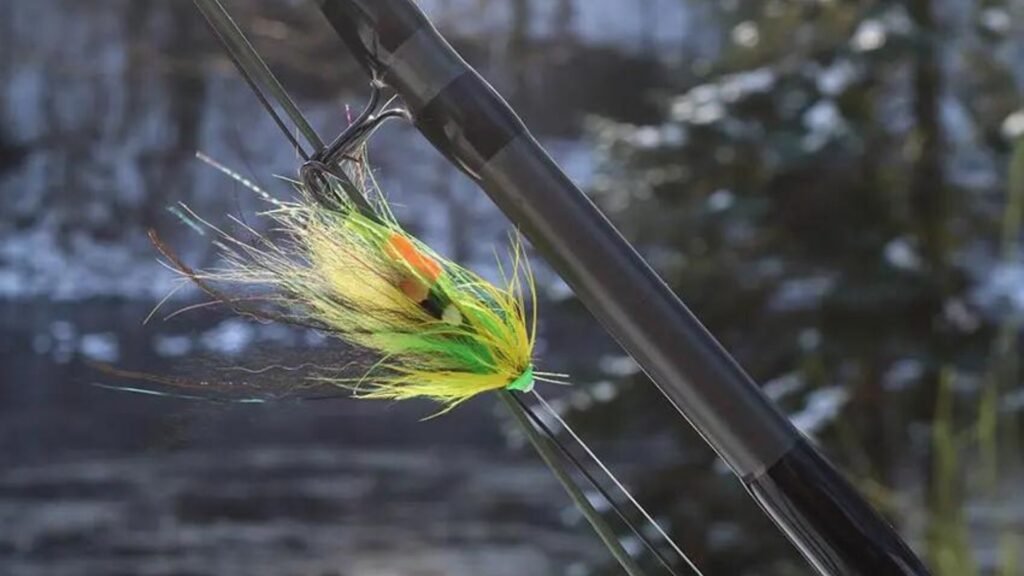Reading water is an essential skill for any angler targeting salmon with flies. It involves interpreting the characteristics of the river or stream to identify where salmon are likely to hold and feed. Here’s how you can effectively read water to enhance your salmon fly fishing experience:

How to Read Water When Fishing with Salmon Flies
Understanding Salmon Behavior
Salmon prefer certain types of water depending on their life stage and environmental conditions. In general, look for areas with moderate to slow currents where salmon can conserve energy while waiting for prey. Deep pools, riffles, seams (where fast and slow currents meet), and undercut banks are common holding spots for salmon.
Identifying Feeding Zones
Salmon actively feed in areas where food is plentiful and easily accessible. Look for signs of insect activity, such as hatches or rising fish, which indicate potential feeding zones. Concentrate your efforts on stretches of water with surface disturbances or where you observe fish breaking the surface to feed.
Reading Currents and Flow Patterns
Observe the flow of water to understand where salmon are likely to position themselves. Deep pools and eddies provide shelter from strong currents and are favored by salmon seeking refuge. Riffles and runs, where water flows over shallow gravel beds or boulders, often attract salmon in search of food carried by the current.
Examining Bottom Structure
The structure of the riverbed influences salmon behavior and feeding habits. Look for submerged rocks, gravel bars, and drop-offs where salmon can hide or ambush prey. These features create natural feeding lanes and holding areas that salmon use to conserve energy and maximize their hunting efficiency.
Interpreting Water Color and Clarity
Water clarity affects salmon behavior and visibility. In clear water conditions, salmon may be more cautious and selective in their feeding. Use natural-colored flies and approach stealthily to avoid spooking fish. In turbid or stained water, salmon may rely more on scent and movement to detect prey, making it easier to present flies attractively.
Observing Surface Activity
Pay attention to surface disturbances, such as rises, splashes, or subtle rings, which indicate feeding salmon. These visual cues help pinpoint active feeding zones and guide your fly placement. Adjust your casting and presentation to target areas where salmon are actively feeding near the surface.
Using Polarized Sunglasses
Wearing polarized sunglasses enhances your ability to read water by reducing glare and allowing you to see beneath the surface. Use them to spot salmon holding in deeper pools, lurking along structure edges, or actively feeding in shallow riffles. Polarized lenses improve visibility and help you make informed decisions about where to cast.
Adapting to Changing Conditions
Water conditions fluctuate throughout the day and seasonally due to weather patterns, river flow rates, and water temperature changes. Stay adaptable by adjusting your fishing strategy in response to these variables. Experiment with different fly patterns, depths, and presentation techniques to maximize your chances of enticing strikes from salmon.
Patience and Persistence
Reading water requires patience and persistence. Be prepared to spend time observing and analyzing the river or stream before making your first cast. Trust your observations and adapt your approach based on feedback from the water and fish behavior.
Learning from Experience
Experience is the best teacher when it comes to reading water for salmon fly fishing. Take note of successful fishing spots, patterns of fish behavior, and environmental factors that influence salmon activity. Continuously refine your skills and knowledge to become a more effective and successful angler over time.
Mastering the art of reading water enhances your ability to locate and catch salmon with flies effectively. By understanding salmon behavior, interpreting water characteristics, and adapting your fishing strategy accordingly, you can maximize your chances of success and enjoy memorable fishing experiences on rivers and streams.



